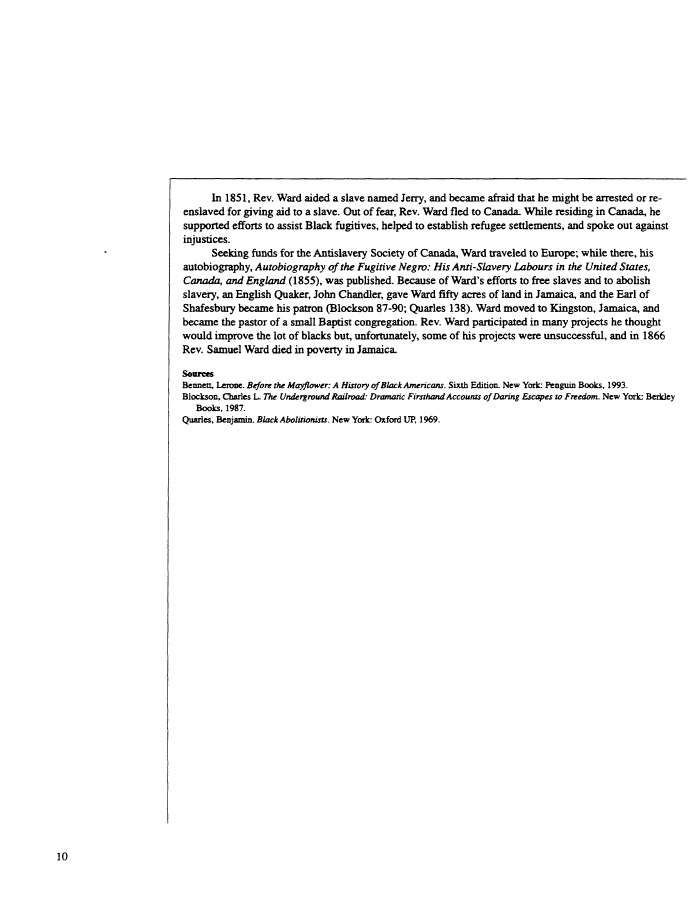 |
||||
|
TASK FORCE TO STUDY THE HISTORY AND LEGACY OF SLAVERY IN MARYLAND (Final Report) 1999/12/31 MdHR 991422 MdHR 991422, Image No: 370 Print image (32K) |
 |
||||
|
TASK FORCE TO STUDY THE HISTORY AND LEGACY OF SLAVERY IN MARYLAND (Final Report) 1999/12/31 MdHR 991422 MdHR 991422, Image No: 370 Print image (32K) |
| In 1851, Rev. Ward aided a slave named Jerry, and became afraid that he might be arrested or re-enslaved for giving aid to a slave. Out of fear, Rev. Ward fled to Canada. While residing in Canada, he supported efforts to assist Black fugitives, helped to establish refugee settlements, and spoke out against injustices. Seeking funds for the Antislavery Society of Canada, Ward traveled to Europe; while there, his autobiography, Autobiography of the Fugitive Negro: His Anti-Slavery Labours in the United States, Canada, and England (1855), was published. Because of Ward's efforts to free slaves and to abolish slavery, an English Quaker, John Chandler, gave Ward fifty acres of land in Jamaica, and the Earl of Shafesbury became his patron (Blockson 87-90; Quarles 138). Ward moved to Kingston, Jamaica, and became the pastor of a small Baptist congregation. Rev. Ward participated in many projects he thought would improve the lot of blacks but, unfortunately, some of his projects were unsuccessful, and in 1866 Rev. Samuel Ward died in poverty in Jamaica. Sources Bennett, Lerooe. Before the Mayflower: A History of Black Americans. Sixth Edition. New York: Penguin Books, 1993. Blockson, Charles L. The Underground Railroad: Dramatic Firsthand Accounts of Daring Escapes to Freedom. New York: Berkley Books, 1987. Quarles, Benjamin. Black Abolitionists. New York: Oxford UP, 1969. 10 |